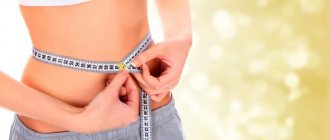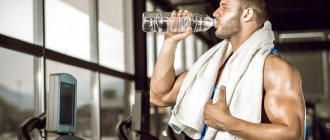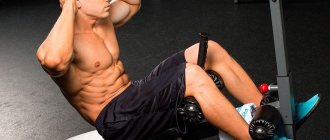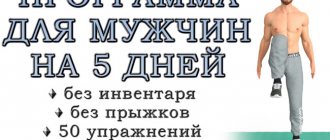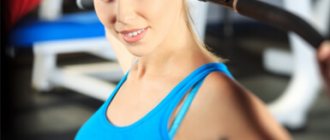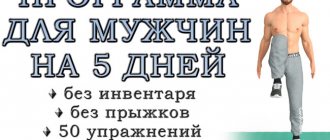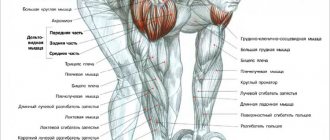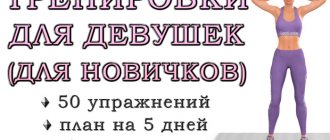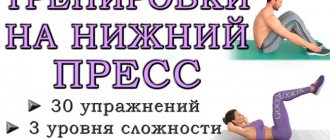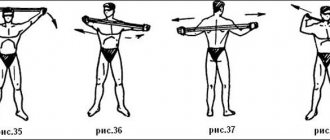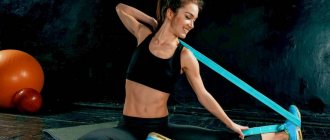What to do during quarantine to boost your immune system? That's right - get vaccinated with training! After all, in the 21st century, it’s no secret that regular activity has long proven itself as a vaccine against ailments, and the annual global survey of fitness trends from ACSM’s Health & Fitness Journal showed that Exercise is Medicine.
Over the past fifty years, hundreds of scientific papers have been published annually on the positive response of the human immune system to physical activity. Since ancient times, medicine has considered physical education a worthy method of preventing many diseases, and in most modern countries there is an institute of physical culture and sports.
In order to get a quality workout, all you need is desire and your own body. But the most important thing is the technique of performing the exercises and a thoughtful plan, without which it is difficult to achieve the desired results. We have prepared a seven-day introductory split for you, designed for training without weights. So let's get started.
Monday
# dot the i's #
Monday is a hard day, so it’s worth putting everything in its place, which means we’ll do stretching. Complex stretching will help you mobilize stiff areas of the body and tone the reflex function of the ligamentous apparatus1, which together will help consolidate the correct technique for performing all stages of the cycle. Important bonuses of this type of fitness are also its beneficial effect on the circulatory system, increased muscle strength2 and excellent sleep.
When practicing stretching, special attention should be paid to breathing techniques. Start your workout by breathing deeply for two minutes. As you exhale, try to relax as much as possible.
Stretching the large muscles of the lower extremities
- Perform a heel sit (baby pose, straight at the back).
- Extend your knee joints, lifting your body up.
- Place one of your legs forward, keeping the angle between your thigh and shin close to 90 degrees, and stand on the opposite knee. Keep your upper body straight, resting your hands on your front leg.
- As you exhale, smoothly move your hip area forward, bring yourself to a comfortable tension and fix the position.
- Breathe deeply, and with each subsequent exhalation, try to move your pelvis further forward, overcoming the tension.
- At least 20 breathing acts per side (breathe deeply).
- Try to keep your stomach pulled in throughout the entire exercise.
- When moving forward, keep the angle under the knee of your front leg no sharper than 70 degrees. To adjust, move the sole forward, bringing the projection of the shin relative to the floor closer to the perpendicular.
Target groups: hind leg - quadriceps and sartorius, iliacus; front leg - all muscles of the medial and posterior thigh.
Front thigh stretch
Next, remaining in the same position, we will work deeper on the front surface of the thigh:
- Move the fulcrum of your knee back a little.
- Grab yourself by the toe of your back foot with the same hand, leaving the other on the front as support.
- As you exhale, press your heel to your buttock and fix the position.
- Continue the deep rhythm of breathing, followed by exhalations, pushing the pelvis forward and controlling the tension of the quadriceps.
- At least 15 breathing acts per side (breathe deeply).
- The main stretch of the quadriceps muscle is due to your own grip.
- Control the forward movement of the pelvis, avoiding the reflexive removal of the heel from the buttock.
Stretching the gluteal, gemellus, obturator and piriformis muscles
And again, without changing the starting position, we will engage in the following muscle groups:
- Use the floor as a support point, keeping your forward leg between your hands.
- Straighten your back leg as much as possible.
- Move your front ankle medially until your shin is completely in contact with the floor.
- Feel the stretch in your gluteal muscle.
- As you exhale, smoothly tilt your body forward and fix the position.
- Continue bending rhythmically, and if necessary, lower yourself onto your elbows.
- At least 15 breathing acts per side (breathe deeply).
Target groups: gluteal, gemelli, obturator and piriformis muscles.
Hamstring stretch
Let's move on to the back of the thigh:
- Straighten your front leg, bringing your foot towards you.
- With the same hand, rush towards the toe, using the other as a support.
- With each exhalation, try to grab yourself further by the sole.
- At least 8 breathing acts per side (breathe deeply), then repeat this exercise using opposite upper limbs.
- When doing this, pay attention to the variability in the degree of tension.
- Keep your front leg as straight as possible.
- Try not to round your lower back, but rather move your chest to follow your leading hand.
Target groups: biceps, semitendinosus and semimembranosus muscles.
The first four-part complex, as you may have noticed, we devoted to large muscle fibers located mainly below the hip joint - perhaps the most significant station of human biomechanical messages, which has the greatest impact on the spine, abdominal organs and legs. Each joint has its own subtleties and nuances, which we will discuss in detail in the corresponding selection of articles. For now, let's continue with the basic complex aimed at the upper body.
Neck stretch
On the top floor, the dominant organ is undoubtedly the head, so let’s start with it:
- Bring yourself into a standing position with your feet apart.
- Slowly tilt your head to one side (right or left).
- With the same hand, grab your head and bring the lateral muscles of your neck to a comfortable tension for you.
- Hold the position for 8-10 seconds. in each direction. Repeat 5 times.
- Tilt your head forward.
- Place both hands on the back of your head and stretch the back muscles of your neck.
- Hold the position for 8-10 seconds. Perform at least 4 repetitions.
- Remember to breathe deeply throughout the exercise.
- Notice how the muscles relax as you exhale.
- Don't put too much pressure on your head.
Stretching the deltoid and pectoral muscles
Let's move on to the deltoid and pectoral muscles:
- From a spread-legged stance, place one of your palms on the opposite shoulder.
- With your free hand, grab your elbow and, controlling the tension in the posterior deltoid region, bring the elbow towards your shoulder.
- Hold the position for 15-20 seconds. Perform at least 4 reps per side.
- Go to a doorway or closet in your room.
- Position yourself so that after placing one of your palms on the surface of the support, there is free space for tilting the body forward. Attention! When setting the support, the elbow should be higher than the shoulder and the arm should be straightened.
- As you exhale, bend forward, controlling the tension in your pectoral muscles.
- At the peak of the tension that is comfortable for you, hold the position for 8 seconds.
- Perform at least 6 reps per side. Don't hold your breath!
Stretching the lower back muscles
Let's complete the complex by stretching the lower back muscles:
- In a spread-legged stance, place your feet slightly wider.
- Perform alternating soft bends to the sides, sliding your hands along your legs.
- Bend while exhaling.
- Perform at least 25 bends in each direction.
- Try to keep your stomach pulled in and bend as you exhale.
Target group: quadratus dorsi muscle.
- Place your feet even wider than in the previous exercise.
- Bend over and place one of your palms on the floor in the center.
- Raise your second hand up, forming a straight line with the first.
- Take a deep breath and, as you exhale, return to the starting position with your arm raised up (imagining that you are holding a weight).
- Perform the next inclination again while exhaling, and also with a hypothetical weight (this will allow you to master the technique of this movement as quickly as possible).
- 15 tilts on each side.
Target groups: longissimus, iliocostalis, serratus dorsi inferior.
Repeat the entire complex three to five times, and the first workout is complete! During class, be extremely attentive to yourself and pay attention to the most spasmodic areas of the body. In the future, this will help you develop the ideal execution technique and avoid injuries.
Equipment for studying at home
To train at home, you don’t need special equipment (like in gyms). But still, some simple sports equipment will not be superfluous.
Dumbbells
Provide additional weight, increasing the load. In the classic version, they are made in one piece. However, in order to save money and free space in the apartment, it is better to purchase a collapsible model. During training, you can adjust the weight by removing or adding removable elements.
Jump rope
This equipment is perfect for doing cardio and developing coordination. Of course, not the best choice for those living in a high-rise building if you are not confident in the softness of your own jumps. But on the ground floor or in a private house, working with it is easy and convenient. This extremely simple design allows you to perform exercises for beginners and can replace a full-fledged exercise machine outside the gym.
Horizontal bar
Used to strengthen the muscles of the abdomen, back, arms, chest. With its help, you can not only work out the upper body, but also develop coordination and dexterity. Installing this sports equipment at home is not difficult. Classes on it are equally recommended for men and women. You can attach special TRX loops to the horizontal bar (this is a compact exercise machine in the form of nylon slings with a simple mechanism for adjusting the length, round handles for the palms and loops for the legs), which will allow you to perform an almost unlimited number of exercises.
TRX hinges
A very convenient compact exercise machine for effective training at home. Does not take up much space in the room, convenient for transportation (if you need to take it with you on vacation or a business trip). The loops are usually attached to a horizontal bar, door or ceiling anchor.
Medball
This sports equipment costs from 400 to 11,000 rubles, depending on the manufacturer, weight, design, and takes up very little space. The weight of the projectile usually varies from 1 to 11 kg. But there are also heavier versions of 50, 60 and 70 kg. Suitable for plyometric exercises, it allows you to work your core and arm muscles. When choosing suitable equipment, novice athletes should give preference to lighter and harder models. The optimal option in this case is from 1 to 3 kg. Be careful that the ball doesn't feel too heavy, so don't be afraid to buy the lightest one to start with.
Expander
By squeezing and stretching this projectile, you can work out various muscle groups. With its help, you can perform leg presses, arm pulls, and retract and spread your shoulder blades. There are many variations of expanders: tourniquets, tubular, shoulder, wrist, butterfly, multifunctional, etc. Each model is compact in size. There is no need to attach the mini-exercise machine, which makes it even more accessible for fitness.
Rug
When figuring out how to do exercises at home, do not forget that it will be inconvenient to train without it. The floor surface is hard, not always warm enough, and comfort during exercise is not the least important. In addition, doing fitness on a special mat is more hygienic. Also, you won’t slip with it, so you won’t injure your knees and elbows.
Remember - sports should be safe!
Tuesday
# strength training #
Today we will do strength training in the classic circuit version. This area confidently leads the list of interests of sports science. A recent study from the University of Texas at San Antonio found that strength-endurance training even had a significant effect on the mineral composition of human tissue3.
4 stations / 4 laps / 45 seconds between stations
- Squats;
- Back/abs – superset;
- One leg squat;
- Push ups.
Squats
The squat is a basic strength exercise and entails a wide range of post-workout responses in the body, even when performed with your own body weight.
- Take a standing position with your feet slightly wider than shoulder-width apart.
- Keep your hands in front of you (for balance).
- As you inhale, squat down.
- As you exhale, rise up.
- 1-2 round 30 repetitions / 2-4 round 20 repetitions (total 100).
- Press your feet firmly to the floor and do not lift them throughout the entire exercise.
- Keep your lower back in a “boat” position, with a slight arch. Don't round it up.
- Do not straighten your legs completely at the top, leave your knees slightly bent.
Back/abs – superset
- “Boat” - from a lying position on your chest, move your arms straight forward and simultaneously lift your legs up at least 20 times each circle.
- “Clip” - lying on your back, raise your legs up, while simultaneously moving your hands to your toes, at least 20 times each circle.
- “Boat” - try to perform smooth movements (without the effect of throwing your arms/legs).
- “Paperclip” - try not to rock on your back, but at the same time move your arms and legs towards each other.
One leg squat
To do this you will need a chair placed against the wall.
- Stand with your back to a chair one step away.
- Place the toe of one foot on a chair.
- With your supporting leg, perform at least 15 squats, then switch sides.
- Make sure that the knee of the supporting leg does not extend beyond the projection of the toe.
- Avoid leaning your body forward excessively.
- Lower your thigh until it is parallel to the floor or slightly lower.
Push ups
- Take a lying position.
- Straighten your arms, placing them shoulder-width apart or slightly wider.
- As you inhale, lower your body down, controlling your pectoral muscles and triceps.
- From the bottom point, as you exhale, push yourself off the floor.
- At least 20 repetitions for each circle.
- Girls can do it from their knees.
How to lose weight most effectively
For weight loss, basic exercises for all muscle groups are more effective. This is because fat deposits cannot be burned locally, despite their uneven distribution throughout the body. The reason directly depends on the fat burning process, which occurs under the influence of hormones. They act on fatty deposits, breaking them down into glycerol and fatty acids. Growth hormone plays a critical role in this mechanism.
On this topic:
HGH for weight loss | Does it really help burn fat?
To start the splitting process, it is necessary to create special conditions for the production of hormones. Since growth hormone is also a stress hormone, the body needs stress to produce it. But not psychological, but physiological. Aerobic or anaerobic exercise helps to cause it.
Explosive loads in the form of circuit training are especially effective here. They are the ones practiced by athletes during drying. The exercise plan for losing weight at home and in the gym will be the same, since the principles of circuit training do not depend on where it is performed. The only difference will be that in the gym you can use exercise equipment, and at home you can only use your own weight and sports equipment.
On this topic:
Gym drying for men, part 2: weekly training program
In order for hormones to work even more actively on the task of fat burning, in addition to training, it is necessary to create a calorie deficit - spend more than you consume. Thus, local fat burning is impossible, since hormones do not affect a specific area, but the entire body as a whole. If the process is started, it will be uniform throughout the body.
You can only strengthen the muscles of the problem area by doing exercises on it. But for general weight loss, it is better to first perform basic exercises for fat burning at home, i.e., on the main muscle groups. As you progress, you can begin to more actively work on the problem area: hips, abs, buttocks, arms, etc.
Wednesday
# interval training - 10 min #
Interval training better stimulates the heart muscle and increases tissue oxygenation4, as confirmed by a recent study from the University of Wales, Swansea, published in The Journal of Sports Science and Medicine.
As an introduction to this type of load, we have chosen a standard burpee for you.
To start, we suggest you follow the 30/30 interval. In the future we will talk about more intensive options. Let's get started.
Burpee
Men:
- Stand up straight.
- Squat down with your hands touching the floor.
- Jump into a prone position.
- Do push-ups from the floor.
- Jump back to the squat position.
- Jump up.
Girls - no push-ups.
- We work for 30 seconds / rest for 30 seconds.
- Try to perform at least 10 jumps per working interval.
- Rest in a standing position (do not lie down or sit).
Thursday
# strength training #
Today we will conduct a light strength training, the main targets of which will be small muscle groups and the abs.
- Reverse chair push-ups.
- Press pendulum.
- Calf raises.
Reverse push-ups from a chair or sofa
- Stand with your back to the chair.
- Sit down with your hands on the edges of the chair behind your back.
- Feel the support.
- Straighten your legs.
- As you exhale, lower your body down.
- As you exhale, push yourself up.
- 4 sets of 15-20 repetitions.
Press pendulum
- Take a supine position.
- Place your arms along your body, palms on the floor.
- Raise your legs, forming a 90-degree angle with your body.
- Alternately lower your legs to the sides, touching the floor with your ankle.
- 4 sets of 16 reps.
- Try not to bend your knees and keep the angle between your stomach and hips close to 90 degrees.
Calf raises
- Place your feet shoulder-width apart. Place your feet parallel.
- Rise up onto your toes, straightening your ankle joints.
- Fix the position at the top point for 1-2 seconds.
- 3 sets of 30 reps.
Anatomy of the back muscles
To know which exercises are best for the back and how to properly train this part of the body, it is recommended that you familiarize yourself with how it works, that is, study in general terms the anatomy of the back. In general, back muscle tissue is present throughout the upper back surface of the human body. Muscles can be divided into:
- superficial , which have two layers. These are the so-called latissimus and trapezius muscle elements, and the second layer is represented by the serratus and rhomboids, as well as the muscle that is capable of lifting the scapula;
- deep.
Back muscles
Resistance bands and wrist trainers
Table. Muscles of the back area.
| Name | Characteristic |
| Latissimus | This is a thin muscle, triangular in shape, but quite large in area. It is immediately visible if you look at the athlete’s back. Its main functions are the ability to extend the shoulder and bring the arm in line with the rest of the body. She is also able to pull the body towards the arms when performing a set of exercises on the horizontal bar. Used by the body during swimming and climbing. |
| Trapezoidal | Also triangular, like the previous one, but the base of the muscle “triangle” is located along the midline at the back. Partially extends to the neck area, located in the upper back area. Flat. Allows you to pull the scapula towards the spinal column. |
| Levator scapula | This muscular element originates in the area of the cervical vertebrae, it is attached to them with the help of tendons and spreads down the back, eventually attaching to the shoulder blade. When moving, he is able to lift the scapula, bringing it closer to the spinal column. |
| Diamond-shaped | Represented by the major and minor muscles. Usually these elements grow together into a single system. They originate in the area of the thoracic and cervical vertebrae and are fixed on the shoulder blade. The functions are the same as the previous muscle. |
| Serrated | These muscles are capable of moving the ribs, raising and lowering them. They occupy most of the entire muscular corset of the back. They have three layers - deep, middle, superficial. The surface layer is capable of straightening the spine. The muscles run along the back along the entire spinal column. In addition to it, they help keep a person in an upright position. Other parts of the serratus muscles are located on both sides of the spine, and can be seen especially clearly in the lumbar region. They create a small depression between themselves. Helps to bend and straighten the back. |
On a note! Also, all back muscles can be divided into three zones - the muscles of the lower back, trapezius and latissimus. The appearance of the back will largely depend on how pumped they are.
Friday
# functional training #
The main benefits of functional training are the development of coordination, agility and mobility.
- Rising from a chair on one leg + abduction.
- Side lunge.
- Bends on one leg.
- Swing your legs in a plank position.
Rising from a chair on one leg + abduction
- Sit down on a chair.
- Straighten one of your legs.
- Get up from the chair and stand back on one leg.
- 12 reps on each leg.
- Use a slight forward lean to initiate the lift.
Side lunge
- From a standing position with your feet apart, take a wide step towards one of your legs.
- Squat down as you inhale and rise up as you exhale.
- Do the same in the other direction.
- 12 reps per side (24).
Bends on one leg
- From the position with your legs apart, inhale and bend over while simultaneously lifting one of your legs and touch your hands to the toe of your supporting leg.
- As you exhale, lift your body to the starting position.
- 12 bends to each leg (24).
Leg swings in plank
- Take a plank position with your arms straight.
- Raise your legs up one at a time, maintaining the plank.
- 15 lifts on each leg (30).
Saturday
# speed-strength training #
You don’t have to visit a stadium to do speed-strength training. In Saturday's workout plan, we'll show you how to develop explosiveness at home.
- Sprint into the wall.
- Reverse lunge with jumping hip lift.
- Jumping.
Sprint into the wall
- Approach the wall at arm's length.
- Simulate running with high knees while leaning against a wall.
- 3 sets to failure / rest between sets no more than 1.5 minutes.
- Try not to reduce the pressure on the wall and do not bend your arms.
Reverse Lunge with Jumping Hip Raise
- From a standing position with your feet apart, lunge one leg backwards.
- As you exhale, lift your supporting leg, lifting your free leg, bent at the hip as high as possible, and jump up using your supporting leg.
- 3 sets of 12 reps with each leg.
Jumping
- Squat down from a standing position with your feet slightly wider than shoulder-width apart.
- As you exhale, jump up as powerfully as possible.
- 2 sets to failure.
Peculiarities
Home workouts for girls are a way out for those who don’t like going to the gym. Exercise will not only help you achieve a slim body, but will also improve your health and restore the functioning of your organs and systems. There are many studies that have proven the benefits of daily home workouts for girls.
Many people try to justify the lack of sports in their lives by saying that it takes a lot of time. However, if you wish, it is enough to devote 30 minutes a day to fitness exercises, and the result will be achieved.
Features and benefits of training:
· saving time and money on travel to the hall;
comfortable performance of exercises;
· a large selection of exercise sets for home workouts for women;
· bath with necessary accessories at hand.
The girl can study at any time convenient for her when she returns home. The only drawback of home workouts is the lack of a trainer who can suggest the technique of performing the exercises. Therefore, when practicing at home, you should take a responsible approach to studying the sports program.
Sunday
Day off
Conclusion
The human immune system is a complex coordinated mechanism that creates an obstacle to both external and internal unfavorable agents. Its performance depends on many factors. Each immunity module subtly reacts to the slightest changes and errors in the system for providing certain needs. Evolution has rewarded us with a powerful and virtually fail-safe protection tool that is capable of constantly learning and saving settings for life. Our task is only to properly provide support for this vital function of the body. In order not to reduce the tone of your own immunity, eliminate the risks from exposure to bad habits, eat well and rationally, consume the required amount of fluid and exercise!
Editor and proofreader: Farida Seidova
Are you training at home? Then you might also be interested in these articles:
Workout
4 exercises with an elastic band or expander AT HOME (WITH VIDEO)
You don't need a heavily equipped home gym to get an effective strength training session. All you need to feel the burning sensation in your muscles is an elastic band and good motivation.
2020-04-20 09:10:15 • Isaac Syred
Workout
7 Best Shoulder Exercises AT HOME (WITH VIDEO)
How to pump up your shoulders at home? We present to you effective exercises with your own weight and with dumbbells to develop the deltoid muscles.
2020-03-31 08:13:59 • Grant Koch
Workout
Basic principles of losing weight at home
The optimal frequency of training according to the home exercise program for weight loss is 3-4 times a week with a break of 1-2 days for rest and recovery. Cardio training (aerobic exercise) is more effective for weight loss - it burns fat better. But in order for the skin to not sag after losing weight, but to tighten and become more elastic, strength loads (anaerobic) are necessary.
On this topic:
Cardio training at home without exercise equipment – how realistic is it? A selection of the best exercises and training plan
On this topic:
The best dumbbell exercises at home: training for major muscle groups
Based on this, to lose weight you need to alternate aerobic and anaerobic training: 1-2 times a week - cardio, 2 times a week - strength training. Both are possible at home, both with and without equipment, i.e. with your own weight. Training with dumbbells is also suitable for strength training.
-44%
Double press roller Outdoor
HVAT (RUSSIA)
The HVAT abdominal roller is a gymnastic apparatus that is one of the simplest but most effective for training the abdominal muscles. It has become especially popular with the development...
To favorites
Compare
2 reviews
5.0
- Efficiency 5.0
- Price quality
5.0 - Design
5.0
890 rub.
499 rub.
Offline
2 pcs. at the address: Moscow, st. Starokachalovskaya, building 5a, shopping center "Krug", 1st floor +7 (929) 911-48-98 Mon-Sun: from 10:00 to 22:00
-18%
Fitness set “Latex band” HVAT Outdoor
HVAT (RUSSIA)
The HVAT Latex Band fitness set will help improve the quality and results of your workouts.
Set features:
- The absence of anchors and handles makes it possible to use any grip...
To favorites
Compare
2 reviews
4.3
- Efficiency 3.5
- Price quality
3.5 - Design
5.0
960 rub.
790 rub.
Offline
3 pcs. at the address: Chekhov, st. Moskovskaya, possession 96, shopping center "Carnival", 3rd floor +7(929)911-48-77 Mon-Sun: from 10:00 to 22:00 1 pc. at the address: Serpukhov, Borisovskoe highway, building 1, shopping center "Korston", 1st floor +7(929)552-18-69 Mon-Sun: from 10:00 to 22:00 3 pcs. at the address: Moscow, st. Starokachalovskaya, building 5a, shopping center "Krug", 1st floor +7 (929) 911-48-98 Mon-Sun: from 10:00 to 22:00
